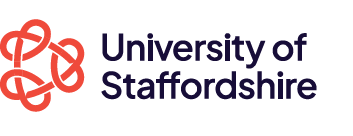Module Descriptors

ENGINEERING INTERNET APPLICATIONS
COSE70615
Key Facts
Digital, Technology, Innovation and Business
Level 7
15 credits
Contact
Leader: Graham Mansfield
Email: G.D.Mansfield@staffs.ac.uk
Hours of Study
Scheduled Learning and Teaching Activities: 36
Independent Study Hours: 114
Total Learning Hours: 150
Assessment
- ASSIGNMENT weighted at 100%
Module Details
Module Resources
Java SDK
NetBeans
ArgoUML
NetBeans
ArgoUML
Module Texts
The Java EE 6 Tutorial 4th ed., Jendrock, E. et al (2010) Addison-Wesley
ISBN: 978-0137081851
Patterns of Enterprise Application Architecture, Fowler M., (2003), Addison-Wesley, ISBN: 978-0321127426
Developing Enterprise Web Services: An Architects Guide, Chatterjee and Webber J., (2004), New Jersey, USA, Prentice Hall PTR, ISBN: 978-0131401600
Java Servlet Programming, 2nd Edition, Hunter and Crawford, (2001), O'Reilly, ISBN: 0596000405
The Unified Modelling Language User Guide 2nd ed., Booch, Rumbaugh & Jacobson (2005) Addison-Wesley ISBN: 978-0321267979
Head First Design Patterns, Freeman, E. et al (2004) O'Reilly Media
ISBN: 978-0596007126
Design Patterns Elements of Reusable Object-Oriented Software, Gamma, E. et al (1994) Addison-Wesley ISBN: 978-0201633610
ISBN: 978-0137081851
Patterns of Enterprise Application Architecture, Fowler M., (2003), Addison-Wesley, ISBN: 978-0321127426
Developing Enterprise Web Services: An Architects Guide, Chatterjee and Webber J., (2004), New Jersey, USA, Prentice Hall PTR, ISBN: 978-0131401600
Java Servlet Programming, 2nd Edition, Hunter and Crawford, (2001), O'Reilly, ISBN: 0596000405
The Unified Modelling Language User Guide 2nd ed., Booch, Rumbaugh & Jacobson (2005) Addison-Wesley ISBN: 978-0321267979
Head First Design Patterns, Freeman, E. et al (2004) O'Reilly Media
ISBN: 978-0596007126
Design Patterns Elements of Reusable Object-Oriented Software, Gamma, E. et al (1994) Addison-Wesley ISBN: 978-0201633610
Module Additional Assessment Details
A practical assignment to design, implement and test an Internet application. Assessed by report and demonstration. (Learning outcomes 1, 2, 3 and 4)
Module Indicative Content
OO design
Designing applications using the UML: Structural modelling; Behavioural modelling; Architectural modelling.
Architectures, frameworks, and design patterns for Internet applications.
Re-use issues in object technology.
Internet applications
Components of Internet applications.
Server-side technologies (e.g. Java servlets, Java Server Pages, Java Server Faces).
Writing clients for Internet applications.
Manipulating a relational database using JDBC.
Designing applications using the UML: Structural modelling; Behavioural modelling; Architectural modelling.
Architectures, frameworks, and design patterns for Internet applications.
Re-use issues in object technology.
Internet applications
Components of Internet applications.
Server-side technologies (e.g. Java servlets, Java Server Pages, Java Server Faces).
Writing clients for Internet applications.
Manipulating a relational database using JDBC.
Module Special Admissions Requirements
None
Module Learning Strategies
18 lectures presenting key topics and concepts.
Tutor-assisted, practical-based learning via 18 hours practical sessions consisting of formative, self-directed exercises to support transfer of knowledge and understanding.
Tutor-assisted, practical-based learning via 18 hours practical sessions consisting of formative, self-directed exercises to support transfer of knowledge and understanding.